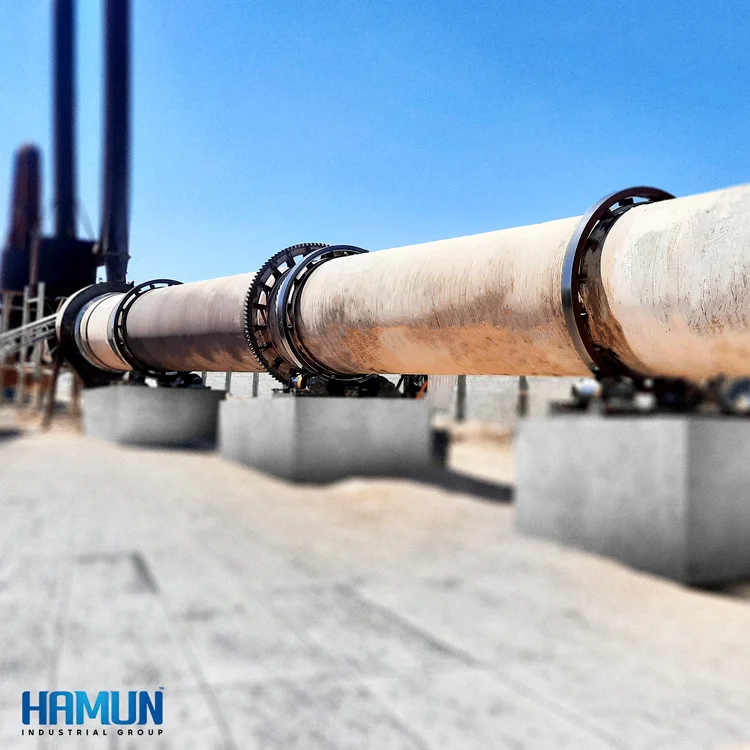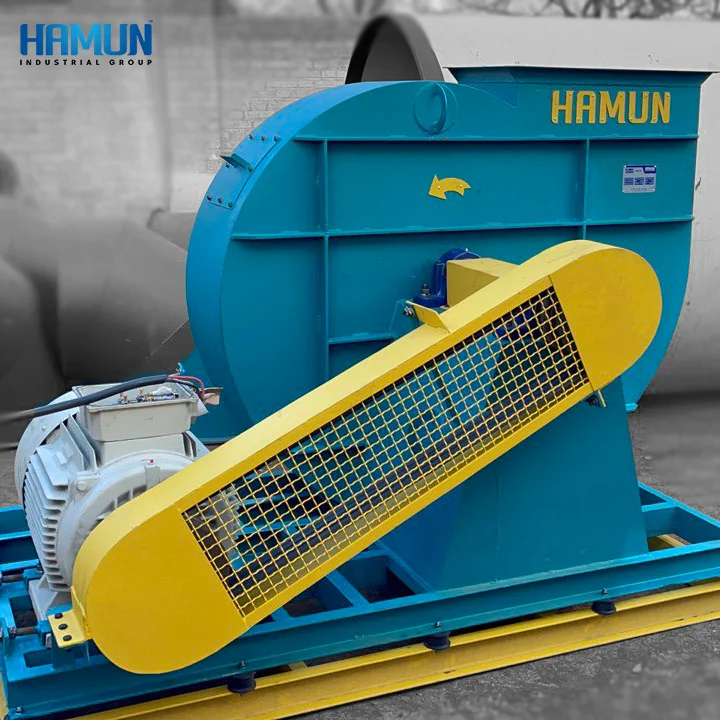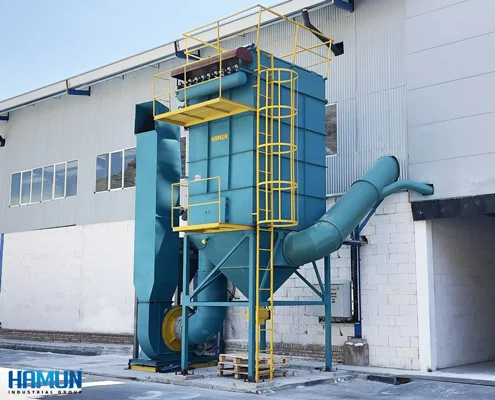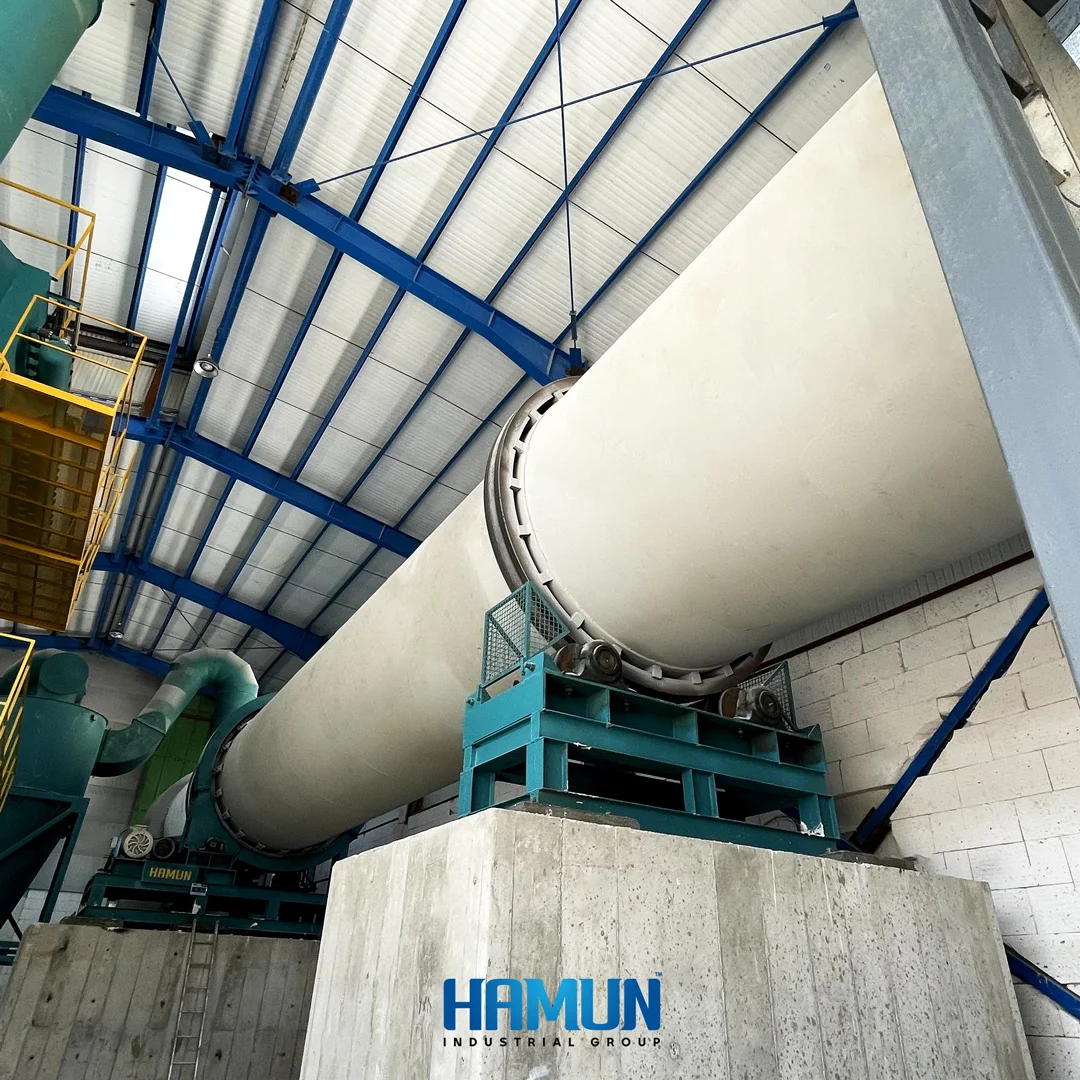Hamun Industrial Group, with a history of designing and fully operating the factory and hydrated lime production equipment, provides design, complete manufacturing and commissioning of live and hydrated lime production line.
Launching a hydrated lime production line
Hydrated lime with the chemical formula Ca (OH) 2 r is one of the most widely used chemicals in the world, which has wide applications in the chemical industry, leather production, food industry, water treatment and… This product is produced by heating CaCO 3 calcium carbonate ore at 950 to 1050 °C and obtaining calcium oxide (CaO) and then reacting quicklime with water in a humidifier.
The choice of equipment and kiln for lime depends on the type of stone and the amount of production. For example, calcination operations can be performed in a standing kiln, a rotary kiln or a floor kiln. The temperature of the furnace depends on the size, hardness and type of rock entering the furnace. For example, the firing temperature is about 900 degrees Celsius for calcite and about 1050 degrees Celsius for marble due to its higher hardness and lower heat transfer.
Standing furnace (shaft furnace)
These types of ovens are used for cooking large limestone (10 to 20 cm). The shaft furnace is a cylindrical chamber that is placed vertically and inside it is insulated with refractory materials and bricks. Limestone or dolomite is poured into the kiln and the flame enters the kiln from the lower parts of the kiln and passes through the pores between the rocks and is pulled upwards by the suction fan. The advantages of this type of furnace include consumption and low fuel consumption. Expensiveness and impossibility of baking small stones and powder are the main disadvantages of this type of furnace.
Lime and dolomite rotary kiln
Rotary ovens are the most common ovens for cooking lime and dolomite. The rotary kiln is a cylindrical steel that rotates horizontally around its axis and its gentle slope causes the inlet material to move from the top of the cylinder to the bottom due to the rotation of the kiln and to the flame and the region. They are guided to the furnace and reach the desired temperature as they get closer to the flame, and after completing the cooking, they leave the furnace.
The advantages of rotary kilns in baking lime and dolomite compared to standing kilns are lower cost and the possibility of baking small and powdered stones. Its main disadvantages are more fuel consumption and depreciation.
Production stages of hydrated lime:
- Crush calcite or travertine ore to a suitable size
- Calcination of calcium carbonate in kilns and production of quicklime
- Powder of quicklime in the secondary mill
- Reaction of quicklime with water in a humidifier
- Throwing hydrated lime with the final mill and separator
Devices used in the production of hydrated lime
- Mill
- feeder
- Conveyor
- Rotary furnace or standing furnace
- Rotary cooler
- Hydrator
- Escape mill and separator
- Lime storage silos
- Filtration system (bag filter)
- Suction fan







